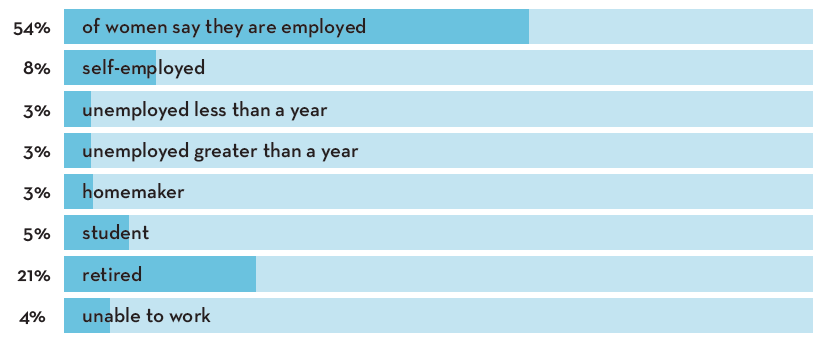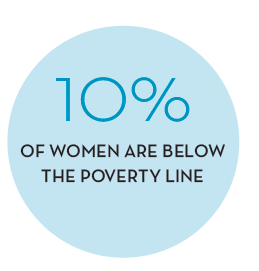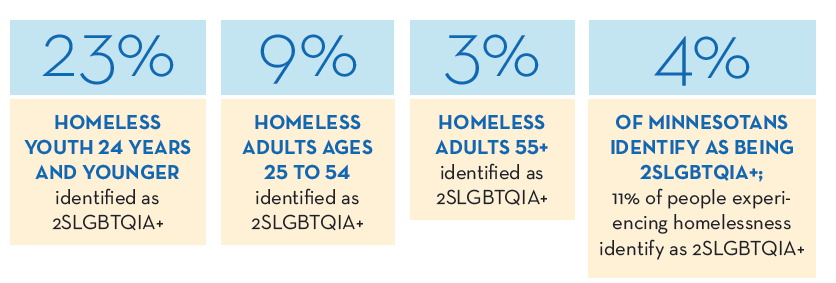Variables in this section are calculated from the U.S. Census Bureau 5-Year Estimates, the MN Homelessness Study, the MDH Transportation Report, and the MN Health Access Survey.
In 2021,

Homelessness

2SLGBTQIA+ people are disproportionately represented in MN’s homeless population (source).
To learn more about the financial and interpersonal reasons 2SLGBTQIA+ people report for housing insecurity in MN, read this 2018 report from the Wilder Foundation. Wilder’s forthcoming Homelessness in MN report (October 2023) will be used to share more about this population in our 2024 Report Card.
Employment
In 2021, there were an estimated 1,769,805 women ages 16-65 in MN, 75.8% of whom were in the workforce (source).
Employment of MN’s Women


- 80.8% of MN mothers with at least one child under age 6 are participating in the labor workforce (source, 2018).
- Females account for 35.1% of the total uninsured population in MN (source).
- Minority or non-White women are four times more likely to be uninsured than White women (source).
- For more information on MN women-owned businesses, refer to this 2016 report.
Transportation
Access to transportation is a vital social determinant of health. Reliable, affordable transportation access allows people to meet their basic needs, such as medical visits (emergent and preventative health), and access to essential goods (like food) and provides economic opportunity through access to employment and education opportunities (source).
- In the Twin Cities, 47% of bus riders and 34% of light rail riders reported having incomes of less than $25,000. On average, owning and operating a car costs $9,000 a year, far from affordable for many people living in MN (source).
- As of 2019, 60% of transport users are women (source)
- From 2012-2017, 9.1% of MN women reported a lack of transportation as a barrier to receiving prenatal care (source)
- Learn about a local solution to rural health access: volunteer drivers in rural MN
